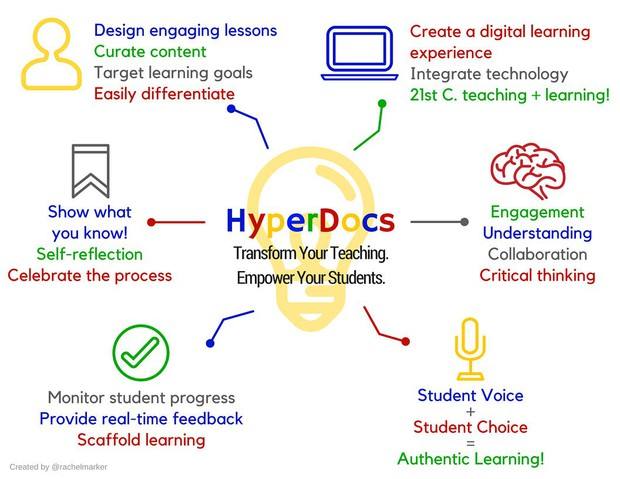Modern education practically necessitates implementation of technology because that is the direction the rest of the world is headed. Students today are already exposed to and aware of technological trends, so “the main goal is not to provide students with information but to teach them how to work with it.” (Yavich & Gerkerova, 2019, p. 1) This can prove to be difficult, as teachers sometimes struggle to ensure technology is being integrated with instructional strategies.
Despite the struggle there are considerable benefits to using technology in the classroom, notably the ability for teachers to provide more immediate feedback to students. Cutumisu et al. (2017) noted that students who received timely and specific feedback “significantly outperformed students who received feedback within 24 hours.” (p. 3) While this obviously helps them, the increased retention of knowledge and higher levels of achievement also allows teachers to streamline the learning process and not get as bogged down with complications.
Another crucial benefit of technology in the classroom is that it allows more time for face-to-face interaction rather than direct instruction. For instance, using a hyperdoc allows students to receive instruction at their own pace while the teacher monitors and facilitates as needed. Hyperdocs are also multimodal, presenting information in a variety of ways and allowing students with a variety of learning styles access to information equally. As every new form of technology is just an improvement on an existing one, hyperdocs are basically an improved webquest. Regardless, they make the teacher’s job simpler so they can focus on student achievement, which is ultimately the goal of implementing new technology in the classroom.
While there are numerous benefits to using technology in the classroom, there are some barriers to actually making it happen. Tsai (2015) notes that some of the most prevalent hindrances are time, training, access to technology, access to experts, and support from administrators. (p. 3) Although these are external factors and their elimination is dependent on decisions made by principals and superintendents, there are also personal factors that can stand in the way of successful implementation. These include the teacher’s own feelings toward implementing technology, in addition to their level of experience. One of the best ways to bring about technological improvements in the classroom, then, is to simply expose teachers to more technology.
Poor self-efficacy can have a tremendous impact on a teacher’s desire and ability to introduce new technology into their classroom. The more uncomfortable teachers are, then “they might not consider technology integration as part of an effective teaching method and even develop a negative attitude toward technology integration.” (Tsai, 2015, p. 2) The more teachers try out new technologies, the more likely they will be to find something that meshes well with their style of teaching and their students’ style of learning. Ultimately, it is not about having the fanciest equipment or the most access, but “how well the teacher is able to incorporate the technology into the classroom and provide outlets for student exploration.” (Lawrence et al., 2018, p. 3) If technology is being welcomed openly, then teachers will be more likely to find practical applications in ways that benefit both them and their students.
References
Cutumisu, M.; Labonté, C.; Oslie, V.; Gange, E.; Brown, H. M.; Smith, V. R. (2017). Teachers'
Experience Using Technology to Provide Feedback That Enhances Students' Persuasive
Writing Skills. Quebec, Canada: Leading English Education and Resource Network. (ERIC
Document Reproduction Service No. EJ1253538).
Lawrence, A. C.; Al-Bataineh, A. T.; Hatch, D. (2018). Educator Perspectives on the
Instructional Effects of One-to-One Computing Implementation. Anadolu University,
Eskisehir, Turkey: Contemporary Educational Technology. (ERIC Document Reproduction
Service No. EJ1176217).
Tsai, H.-C. (2015). A Senior Teacher's Implementation of Technology Integration. Toronto, ON,
Canada: Canadian Center of Science and Education. (ERIC Document Reproduction
Service No. EJ1067801).
Yavich, R; Gerkerova, A. (2019). Distance Communication of the Lecturer and Students in the
Higher Education. Toronto, ON, Canada: International Journal of Higher Education. (ERIC
Document Reproduction Service No. EJ1212837).
Footnotes
1. https://study.com/cimages/multimages/16/classroom_technology_fotor.jpg
2. https://blog.tcea.org/wp-content/uploads/2019/07/RachelMarker_Hyperdocs.jpg


Hello,
ReplyDeleteI like how you wrote about using hyperdocs in the classroom. I had not heard about hyperdocs before and after learning more about them, I think they are a great addition to the classroom. Since all of the information and resources are right there for the students, the teacher has more ability to help individual students. Hyperdocs are also great for differentiating and individualizing instruction. I will be doing more research about hyperdocs to see how I can best use them in my future classroom.
Josh,
ReplyDeleteYour point about teacher comfort level is so true. The recent pandemic has pushed many tech reluctant teachers into the pool of technology! I also feel that technology can give teachers more face to face instruction when the background knowledge is given digitally. The most difficult hurdle for technology and communicating with students and parents may be the lack of resources in some areas. Both urban and rural areas may suffer from the digital divide. In rural Virginia where my in-laws live, the internet was not great in the country where many of the students live, making virtual learning almost impossible.
Great job!
Josh,
ReplyDeleteThanks for providing a very balanced perspective on integrating tech in the classroom. I especially appreciate that you made note of some of the barriers. I have taught at very well-resourced schools, as well as at schools with more limited resources. It is so important for administrators to "buy in" with the budget and training, especially in the current climate where teachers have a very steep learning curve. It is pretty difficult to overcome the belief that we can't succeed....which is a good reminder to me of how my students sometimes feel!
Access, training and support are huge barriers to effective implementation of technology in the classroom. Your reminder about weighing those costs against the benefits is a good point to consider. Both educators and students need to be supported through training and equitable access.
ReplyDelete